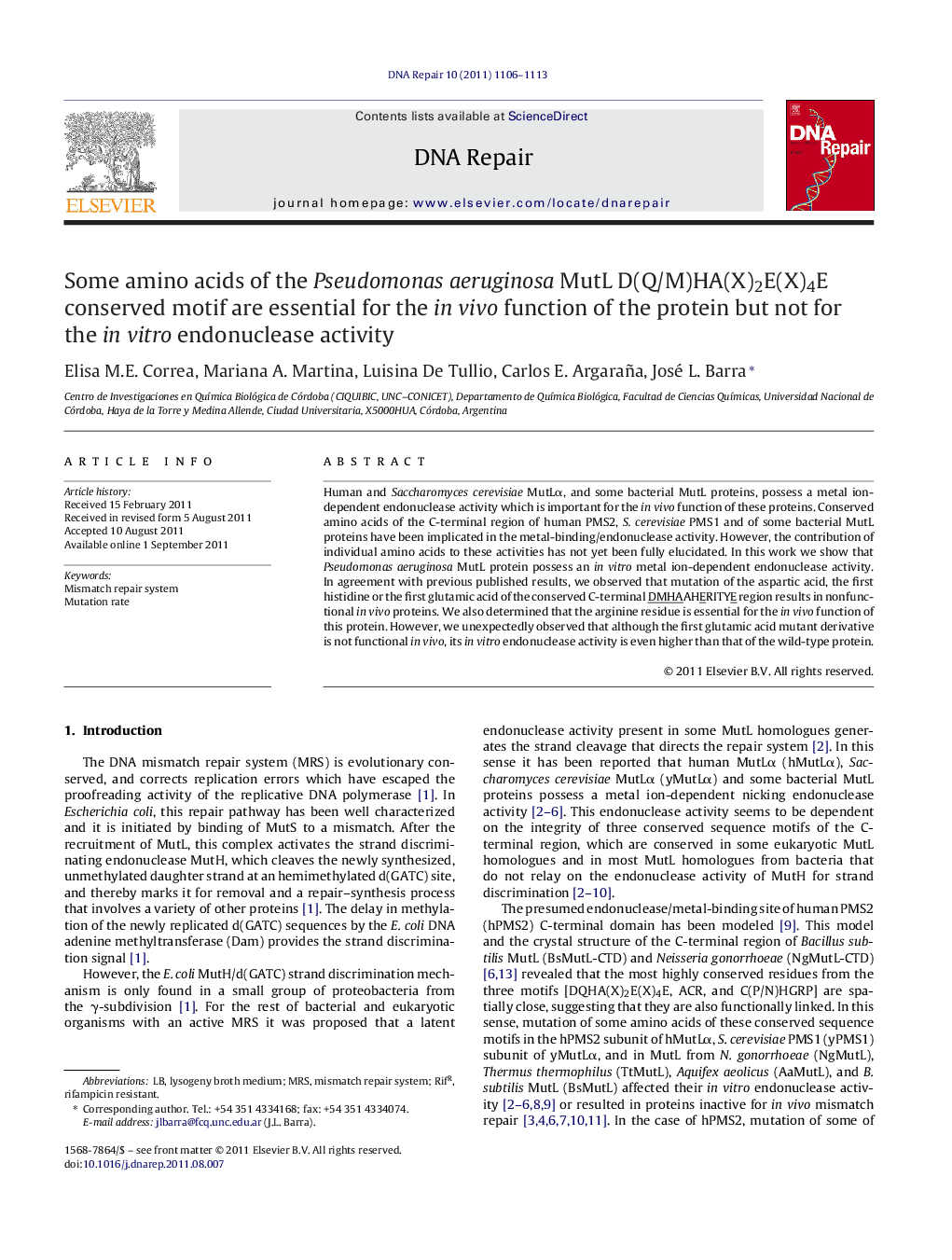| Article ID | Journal | Published Year | Pages | File Type |
|---|---|---|---|---|
| 1980414 | DNA Repair | 2011 | 8 Pages |
Human and Saccharomyces cerevisiae MutLα, and some bacterial MutL proteins, possess a metal ion-dependent endonuclease activity which is important for the in vivo function of these proteins. Conserved amino acids of the C-terminal region of human PMS2, S. cerevisiae PMS1 and of some bacterial MutL proteins have been implicated in the metal-binding/endonuclease activity. However, the contribution of individual amino acids to these activities has not yet been fully elucidated. In this work we show that Pseudomonas aeruginosa MutL protein possess an in vitro metal ion-dependent endonuclease activity. In agreement with previous published results, we observed that mutation of the aspartic acid, the first histidine or the first glutamic acid of the conserved C-terminal DMHAAHERITYE region results in nonfunctional in vivo proteins. We also determined that the arginine residue is essential for the in vivo function of this protein. However, we unexpectedly observed that although the first glutamic acid mutant derivative is not functional in vivo, its in vitro endonuclease activity is even higher than that of the wild-type protein.
► Integrity of PaMutL DMHAAHERITYE motif is important for the in vivo function. ► PaMutL displays an endonuclease activity in the presence of Mg2+ or Mn2+. ► Zn2+ inhibits the in vitro Mg2+ or Mg2+/Mn2+ stimulated endonuclease activity. ► D467, H469, E473 and R474 are essential for the in vivo function of PaMutL. ► E473 is not essential for the in vitro endonuclease activity of PaMutL.
